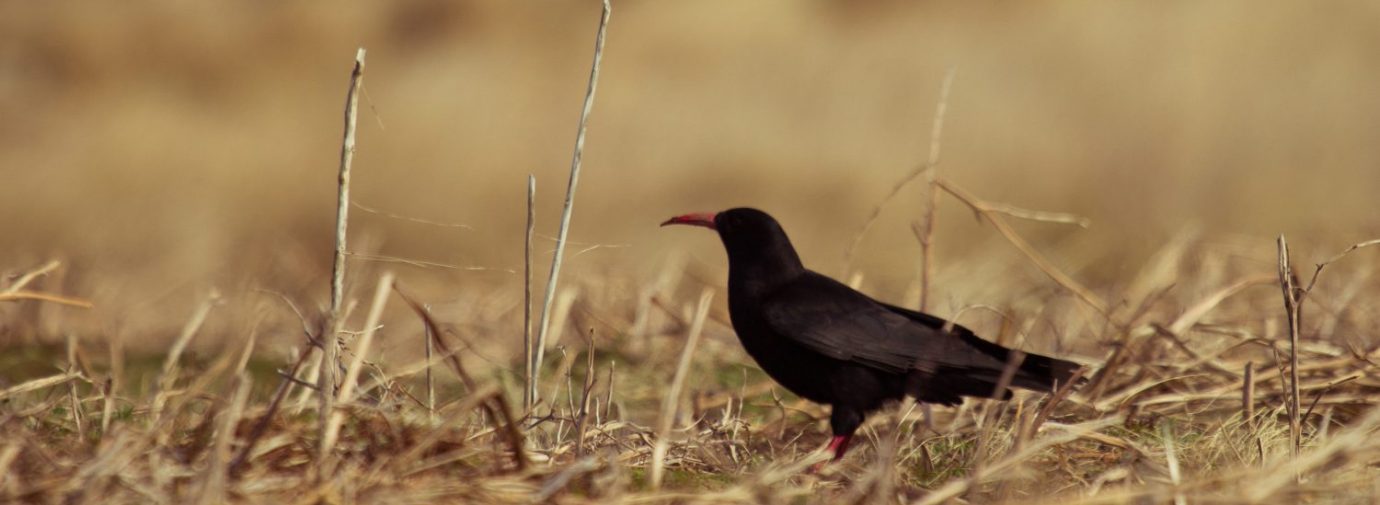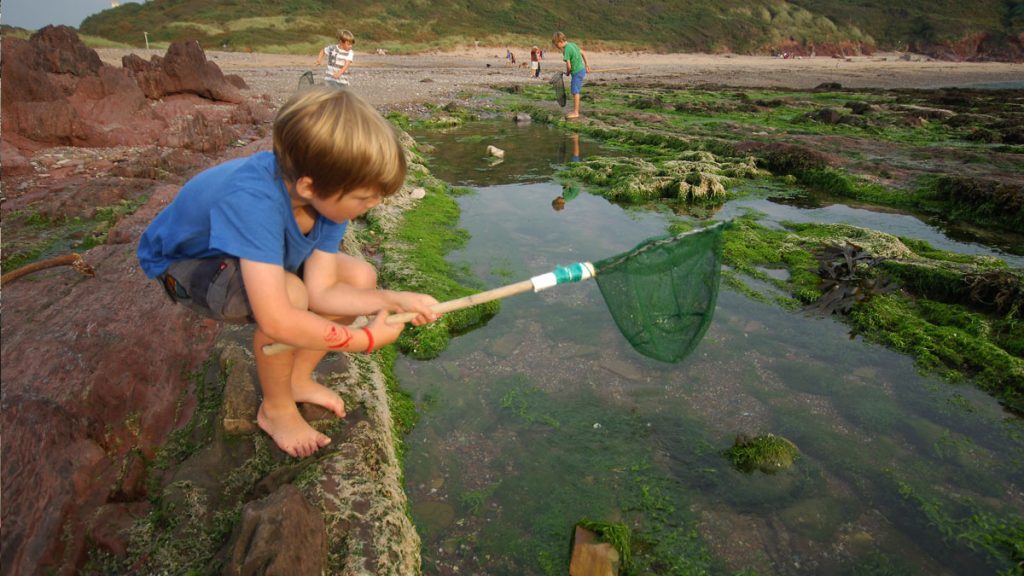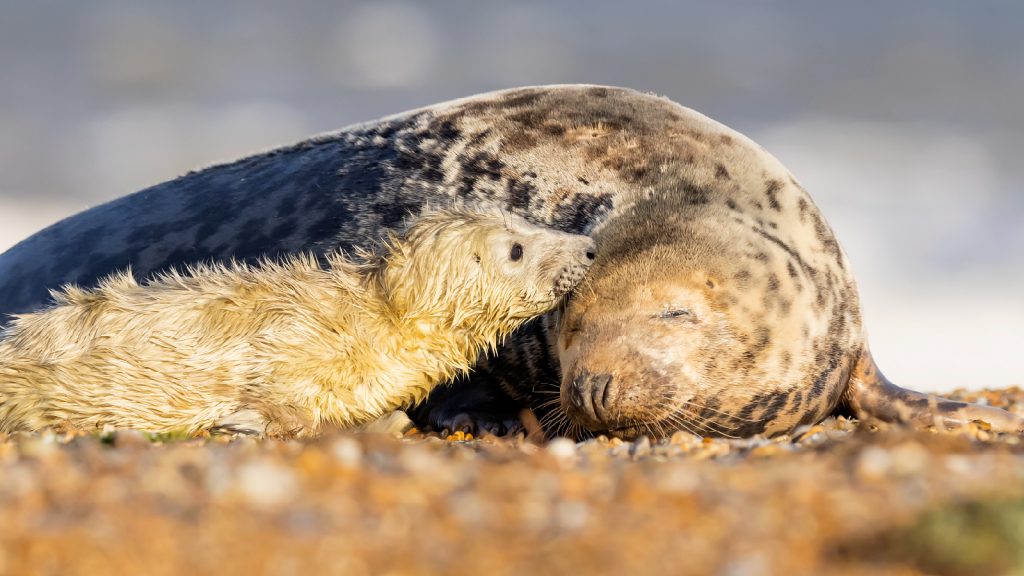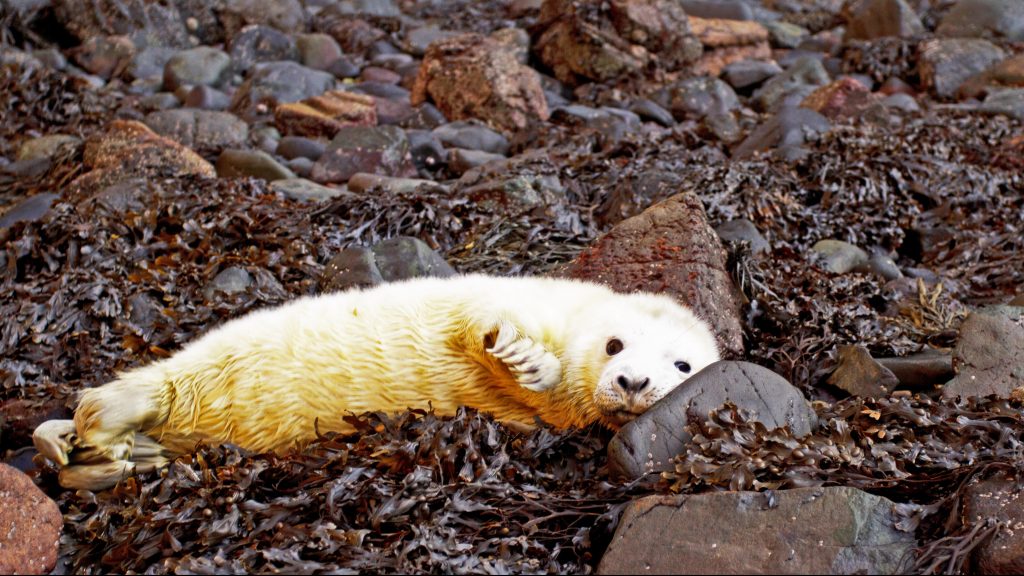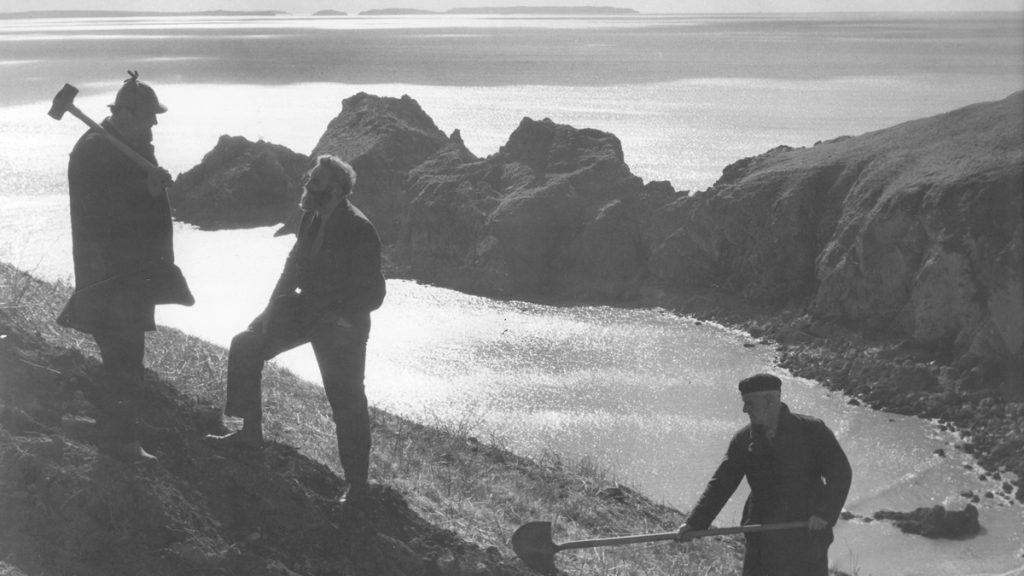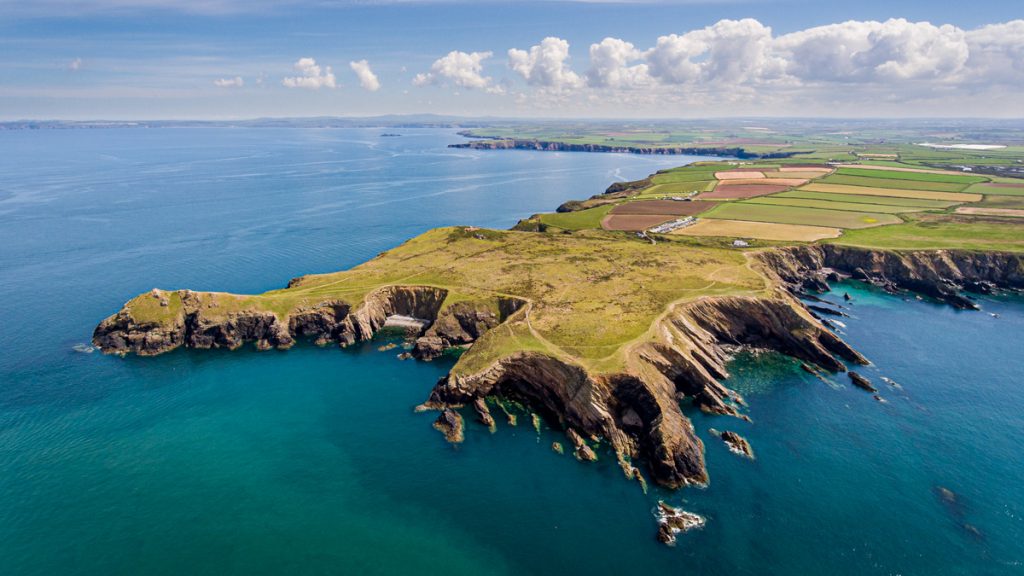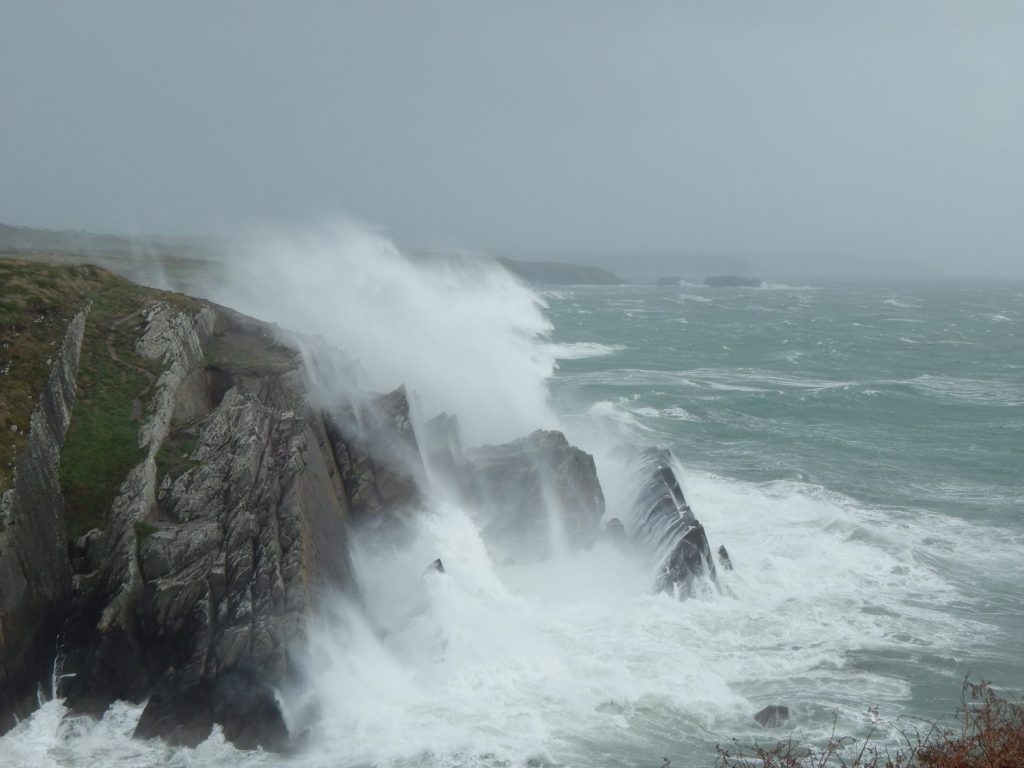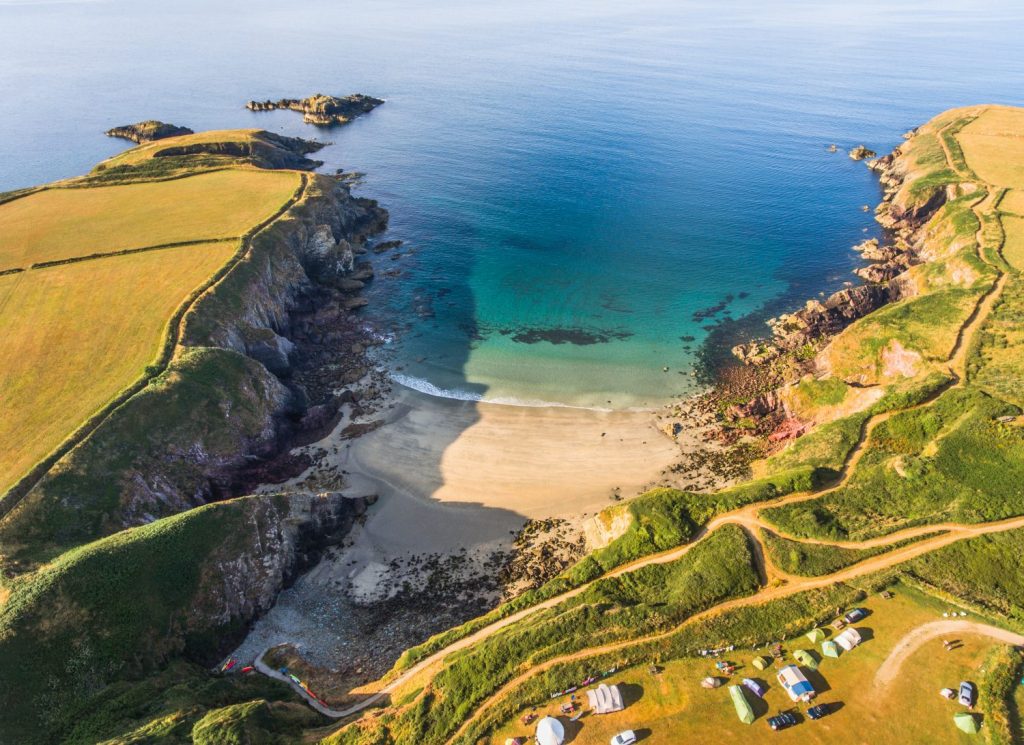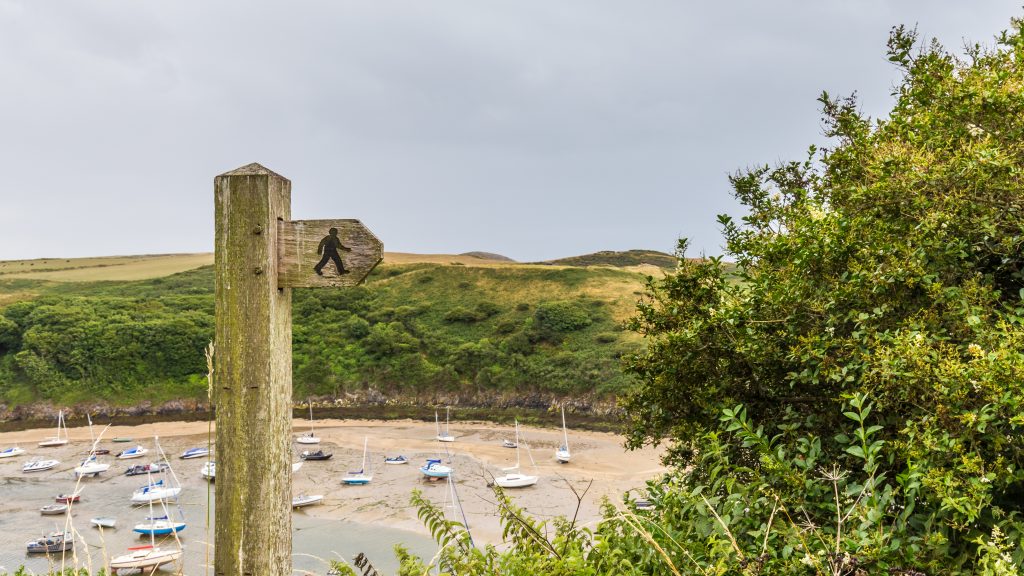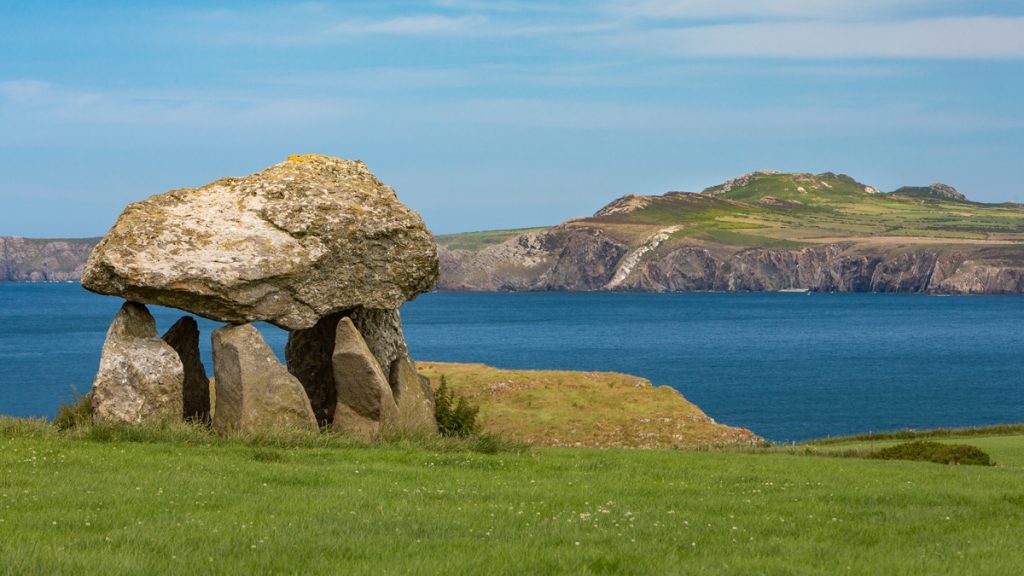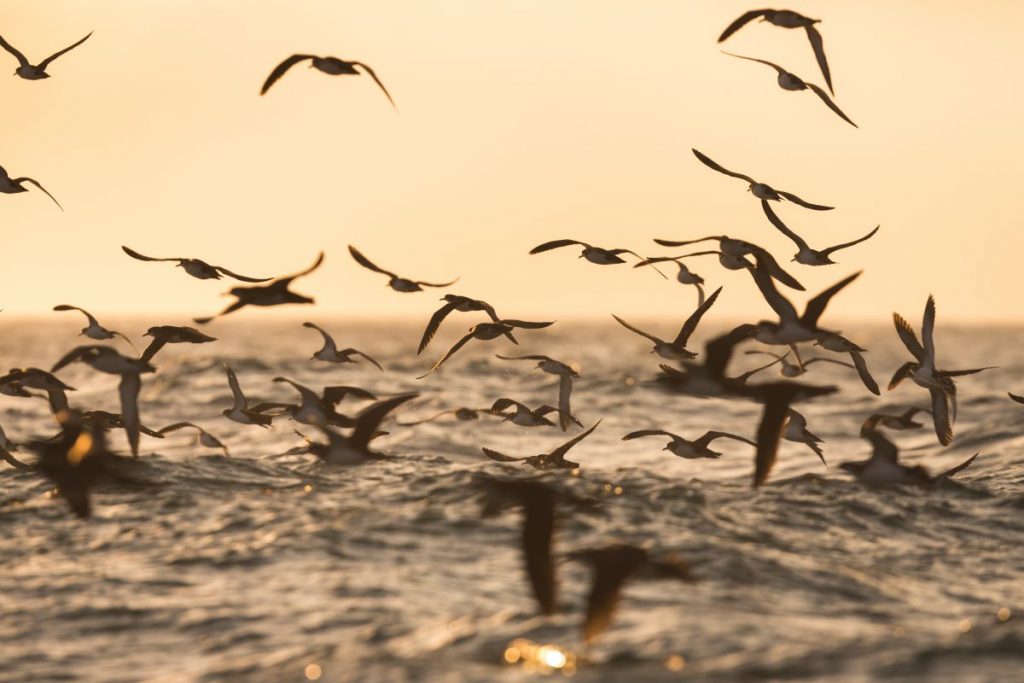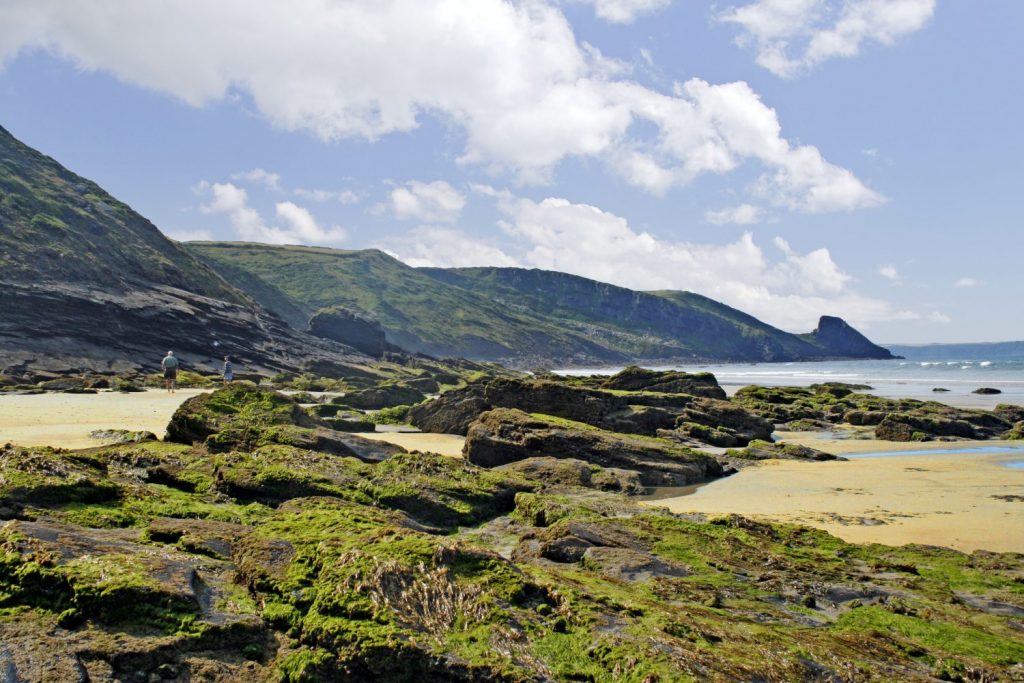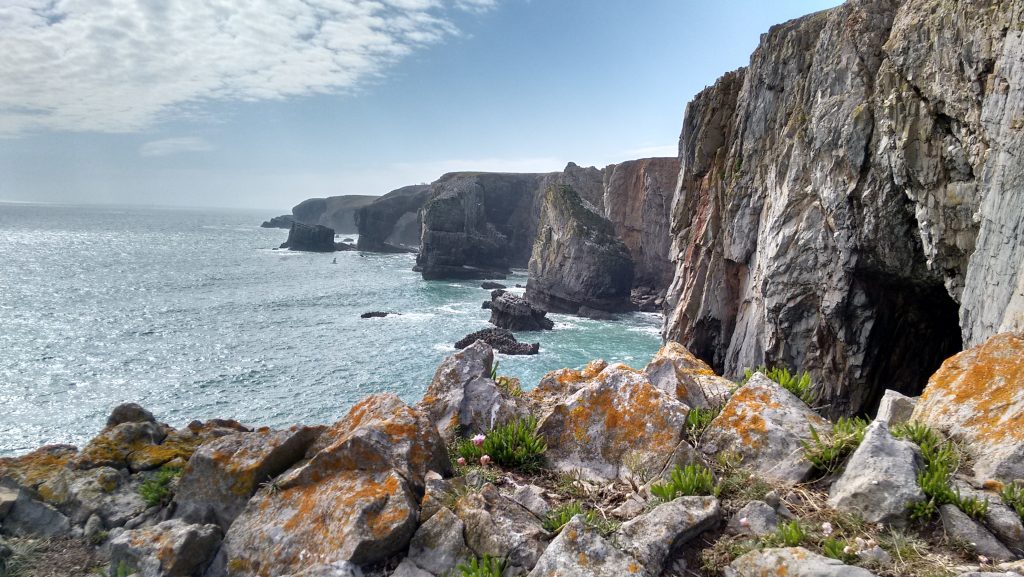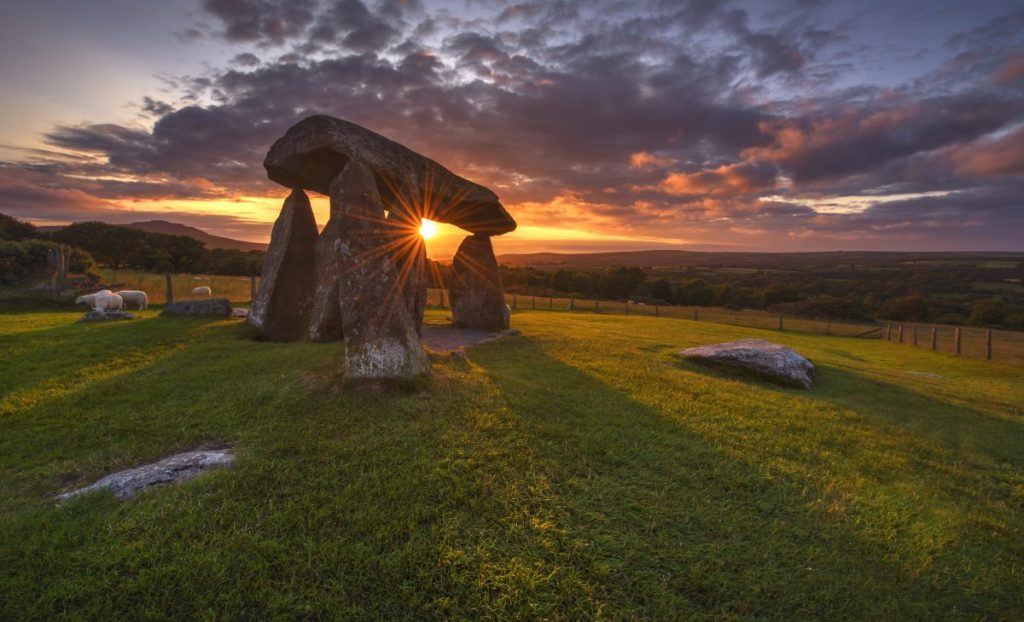Explore the amazing wildlife that makes its home on the Pembrokeshire Coast - not forgetting the exciting array of seasonal wildlife which also loves to visit Pembrokeshire year after year.
Rare birds such as choughs, skylarks and the stonechat choose the coastal heathland to make their home. Bats and many bird species hunt along the lines of twisting hedgerows, rich with wildflowers, whilst Atlantic grey seals give birth on our shores and dolphins and porpoises play in the waves.
As if these local characters aren’t enough, we are lucky to attract a vast array of extraordinary creatures who return every year to Pembrokeshire’s shores. These include basking sharks, orcas, blue whales, blue sharks, sunfish, various jellyfish, turtles and Risso’s dolphins. You are very lucky indeed if you catch a glimpse!
Bats
All of the 16 species of bat in the UK are in decline and all of them are protected. Their roost sites are also protected by law. Twelve of these species are found in Pembrokeshire. Bats are important to the ecosystem because they are insect predators, flower pollinators and seed dispersers. They are also important because they are valuable to a habitat’s biodiversity.
All British bats feed on insects they catch in flight. To bring up their young they need to catch large quantities. Insects fly at dawn and dusk so this is the time you are most likely to see bats. Bats can only be heard with special listening equipment that converts their ‘echolocation’ squeaks into audible sound.
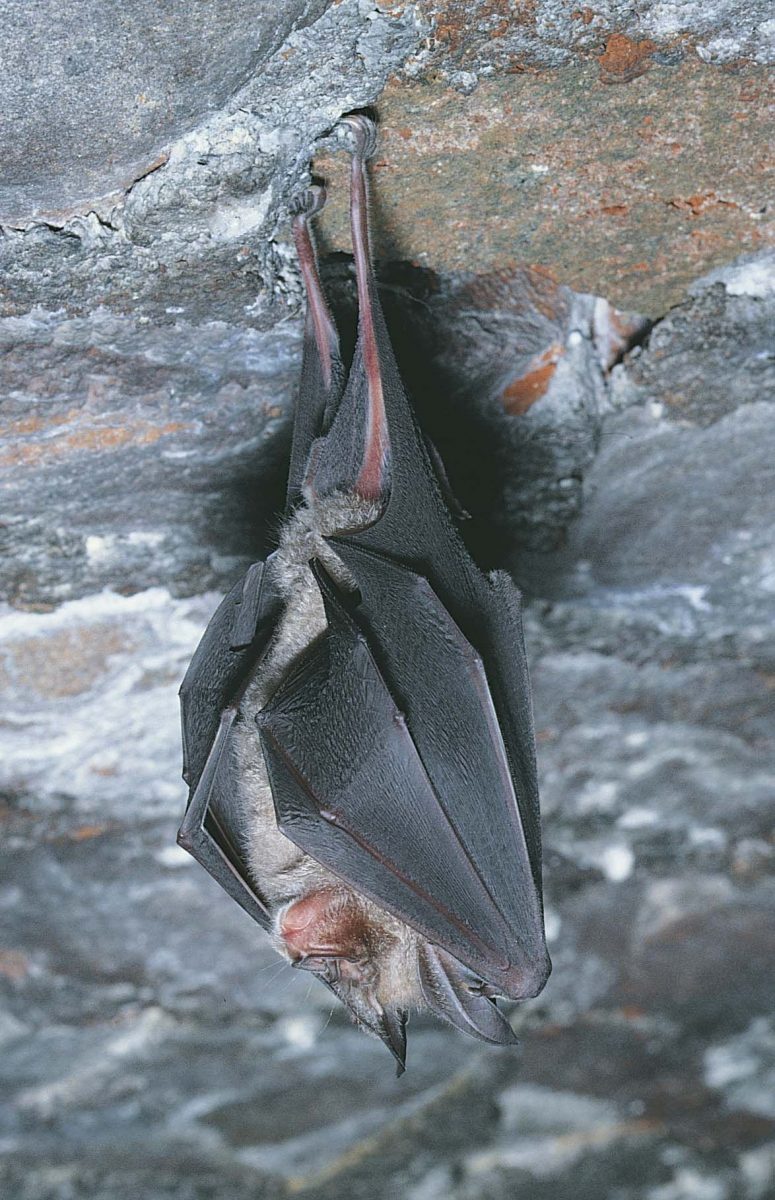 Greater horseshoe bat © Melvin Grey.
Greater horseshoe bat © Melvin Grey.
How are bats protected?
The common pipistrelle bat is protected in Pembrokeshire and has its own species action plan to monitor the success of this protection. It is the smallest bat in the UK, with a body length of 4cm and a wing span of 20cm. It is the most likely species to be found in built-up areas as the bats can use crevices in buildings as nursery colonies. In the country they roost in large trees. The largest breeding colony of pipistrelles in Pembrokeshire is around 1,000 bats.
It is a criminal offence to harm the bats and their roosts in any way and this protection in law extends right across Europe. They are listed on Appendix III of the Berne Convention, Annex II of the EC Habitat and Species Directive and Appendix II of the Bonn Convention. In the UK they are listed on schedules five and six of the Wildlife and Countryside Act 1981 (as amended). Their status is high in terms of the UK Biodiversity Action Plan (BAP).
Why are pipistrelles in decline?
The main reason they are in decline is because of the loss of insect-rich habitats as a result of the introduction of intensive farming methods. Hedge and woodland removal, drainage of wetlands and the use of large amounts of chemical insecticides have all helped to reduce the number and diversity of insects to hunt. Recent research has shown that bats are found more often at the edges of woodland and over water. If these two habitats are altered it reduces the numbers of insects in these habitats. Restoration of woodland in particular would benefit pipistrelle populations because they use the trees as roosts.
Pipistrelle bats roost in trees all year round. In the winter they hibernate in trees because the trees are insulated. Loss of mature trees with suitable holes has made it difficult for bats to survive the winter. These mature trees are also used as mating sites in the autumn and spring. The trees are also great sources of insects as they can provide valuable sites for egg laying and larvae development. It is therefore very important that mature trees are kept in any woodland. Artificial bat boxes can also help the bats’ survival and there is a programme supported by the Pembrokeshire Bat Conservation Group to put boxes in many sites in the Park’s woodlands.
The loss of sheltered ‘flyways’ has also led to a decline in numbers. These are used like roads between roosts and feeding grounds. They are usually mature hedge banks, rivers and streams with overhanging trees. These hedges and waterways also act as aids to navigation and feeding places ‘en route’. Any change to these corridors has a negative effect on bats. These features will be more sympathetically managed in the future, to maintain their beneficial effect upon bat survival.
Finally every care must be taken not to disturb maternity roosts in buildings during any roof repair, extension work or chemical treatment for things like woodworm. If bats are known to be roosting in a building then advice should be sought from Natural Resources Wales.
Conclusion
Bats are surviving well in Pembrokeshire but more research is needed to find out where the 12 species are living and how the habitats they are in can be managed to aid their survival.
Choughs
The chough is a bird of legend and is written about in tales like the legend of King Arthur. It is also the rarest member of the crow family. The birds have a distinctive red bill and legs and are acrobatic fliers. They can be seen and heard most often in late summer on the most westerly exposed cliffs, flying as family groups as the young learn their flying skills. They have a distinctive “chi-ow chi-ow” call and they are often heard before they are seen.
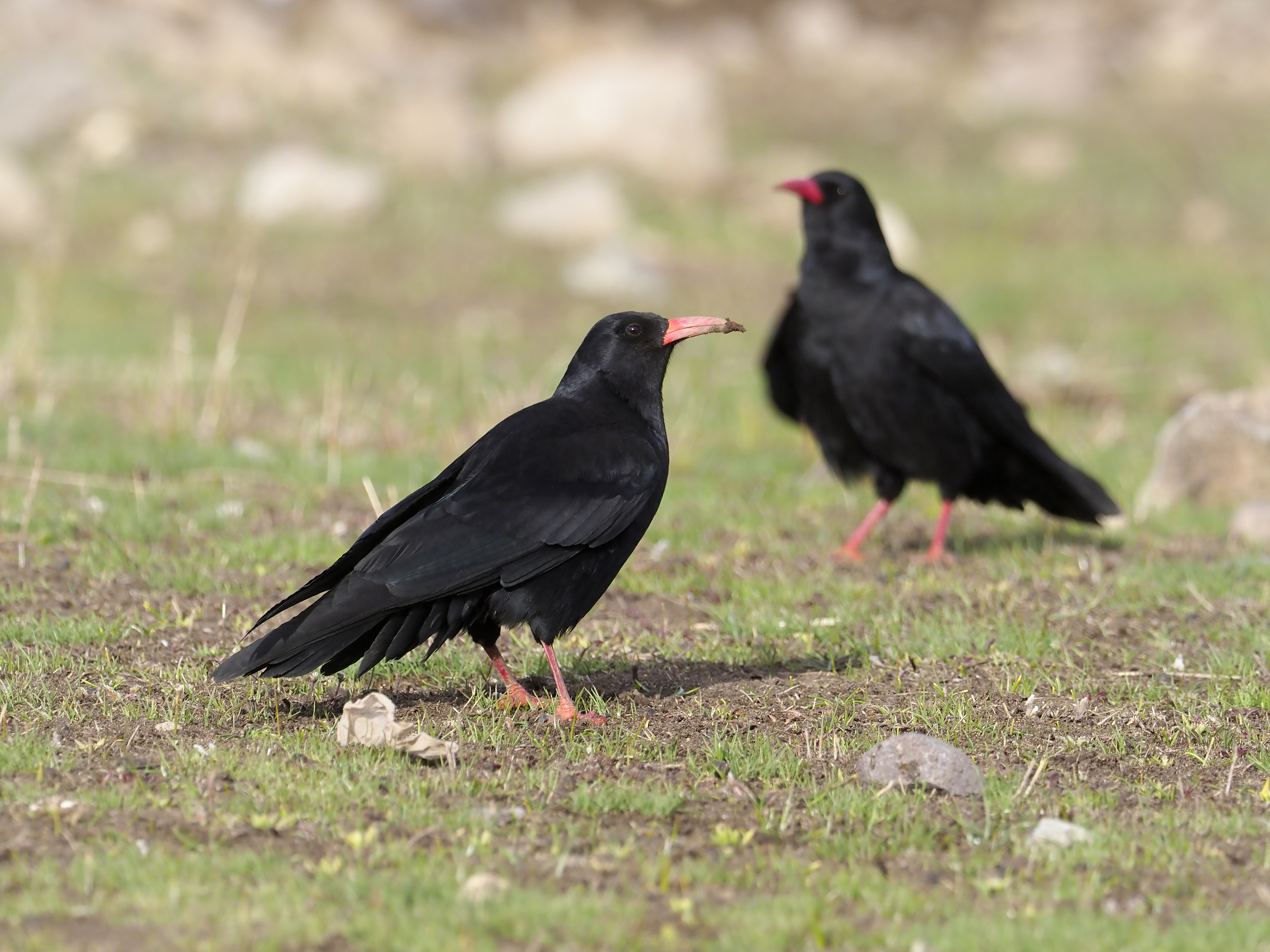 Chough
Chough
In the summer they eat insects and invertebrates that live in short rough grass or animal dung, such as beetles, fly larvae and ants. In the winter they will eat grain left in stubble or search for invertebrates in the strand line along the beach.
They nest in sea caves or in rock crevices – really inaccessible places. Their nests are made of twigs, sticks, heather and gorse with a lining of wool, hair, fine grasses and feathers. Up to six eggs are laid and they take 18 days to hatch. In Wales the average number of fledglings is three and the parents will look after these for several weeks. In Pembrokeshire breeding pairs are found along the cliffs of the Castlemartin Peninsula, and the islands of Ramsey, Skomer and Skokholm.
Why are they so rare?
There are probably three reasons to explain their decline. Firstly, despite nesting in really inaccessible places their eggs have been robbed by egg collectors. Egg collecting is now illegal but enough have been stolen to reduce the chough population. Secondly, rock climbers can be more of a threat as they will easily disturb a brooding bird. Another likely reason for the decline is a change in the way the land is used. When farming was less intensive, animals were grazed nearer the cliff top, where the chough could find insects in their dung. This grazing also kept the grass to the best height for the invertebrates which are also eaten by the chough. Now cliff top grazing is not as common and the land has become covered in scrubby bushes like gorse and blackthorn.
How are they protected and managed?
The chough is listed in Annex 1 of the EEC Directive EC/79/409 – conservation of wild birds and in Annex 2 of the Berne Convention on the conservation of European wildlife and natural habitats. In the UK they are listed on Schedule 1 of the Wildlife and Countryside Act 1981 and listed in category 2 of the JNCC’s Birds of Conservation Importance. This means that this local bird is internationally protected.
To improve their breeding success we need to improve the management of the land. Improved land management practices should increase the potential feeding area and so the number of breeding pairs can increase. Breeding success can also be achieved by restricting climbing access in vulnerable areas during the breeding season. Providing artificial nests in appropriate locations could also enable more pairs to breed. Finally, it is important to raise awareness of this bird’s decline and to stop persecution by farmers and estate managers. If these groups understand the plight of the chough then they can be encouraged to help these birds to breed on their land.
Dormice
The dormouse is one of the rarest mammals in the UK. Unlike other mice it has a thick fluffy tail and an orange/brown upper body. Dormice are rarely seen because they are nocturnal and move about in the branches above the ground. They only come to the ground to hibernate. They feed on flowers, pollen, insects, fruit and nuts, especially hazelnuts. They make a round, scruffy nest of grass and honeysuckle bark.
In these they can produce up to seven young in two broods per season. They are famous for the amount of time they spend asleep – about three quarters of their life! This sleepiness is thought to help them live for five years, a long time in terms of small mammal life spans.
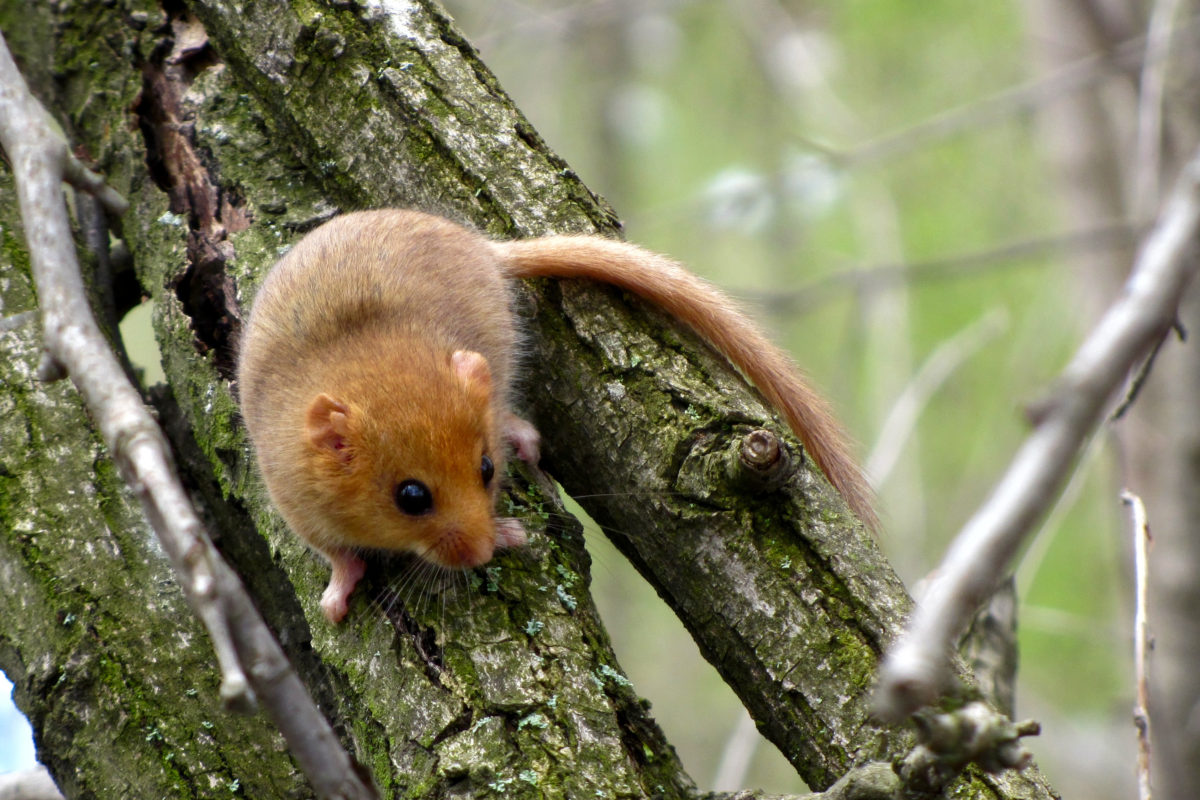 It is an offence to handle a dormouse or its nest without a special licence.
It is an offence to handle a dormouse or its nest without a special licence.
The ideal habitat for dormice is open, deciduous woodland or overgrown hedges. They do best in coppiced woodland of hazel with oak, ash, hawthorn, birch and blackthorn. They need an under-storey that contains honeysuckle and bramble. The bramble must have blackberries on it every year.
Dormice are known to live in the woodlands of north Pembrokeshire but their distribution is sporadic and the population size is unknown. We do know that 20 dormice make a viable population in any separate location and that if the population is this size then it has the potential to grow.
Why is the dormouse in such decline?
As a species, dormice are very choosy about where they live, but human activity has not helped their cause. The decline of woodland management since the First World War has meant that the open canopy that they prefer has become overgrown and the rotation of coppicing of hazel has been lost. Also, hedgerows have been dug up, split up and managed inappropriately so the trees that support the dormouse have been lost. Populations have become separate and are fewer than the viable number. Grey squirrel numbers have increased and dormice are in competition with them for food.
How are populations protected?
Dormice are protected by the Wildlife and Countryside Act 1981, and have a high status as a priority species in the UK Biodiversity Action Plan (BAP). It is an offence to handle the animal or its nest without a special licence. They are also protected by European law and are listed on Schedule 2 of the Conservation (Natural Habitats) Regulations 1994.
The main way they will be protected is to ensure all future woodland and hedgerow management is appropriate for dormice to provide them with potential habitats. There is a National Dormouse Nestbox Programme, which aims to encourage population growth by providing suitable nesting sites in potential habitats.
Close monitoring in woodland where they are found should give us population size and distribution information, and then we will be more able to create potential habitats for these populations to grow. Identifying a population can be done by looking for distinctive hazelnut shells; a dormouse will carefully open a nut by making a smooth round hole in the nut rather than crack it in half like the squirrel does. As the dormouse does not usually move far from its nest, finding such a nut means a nest is not far away.
Skylarks
Skylarks are small, brown, ground nesting birds that live in open rough grass found on arable farms, meadows, moor and heath land. They are known for their bubbly song that they sing as they fly above their nests. This song tells other birds where their nest territory is and to keep away. They feed on seeds, arable weed plants, flowers and insects.
Pembrokeshire has 4% of the UK’s breeding population. In 1988 there were about 8,000 pairs, but this number is in severe decline, so the species is protected by the Wildlife and Countryside Act 1981 (as amended) and is listed in Annex II of the EC Birds Directive. Its protection is given a ‘high’ status in terms of the UK Biodiversity Action Plan. This means all that can be done to save this species has to be done to halt the fall in numbers.
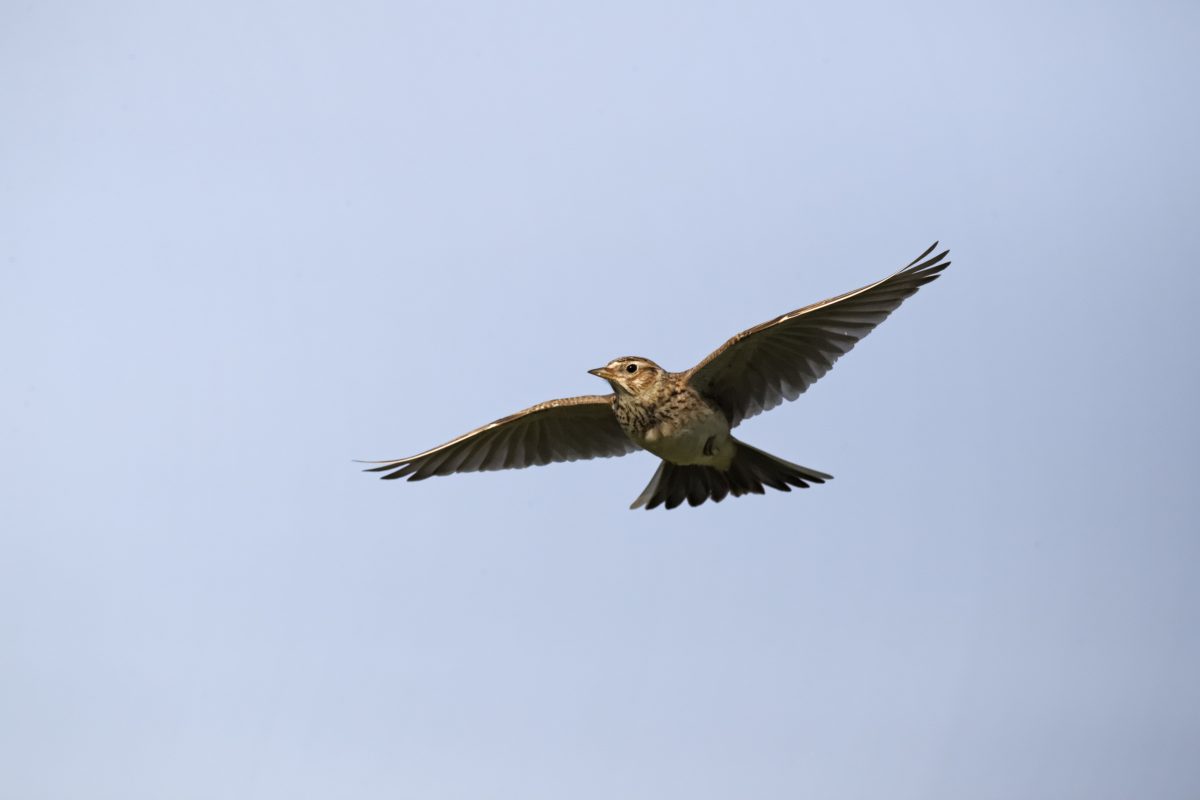 Skylark
Skylark
Why has there been such a decline?
Numbers of skylarks have fallen because of the way we farm. Since the end of World War II and since the 1970s, farms have changed the way they feed their cattle and graze their sheep. Farmers now feed their cattle on silage (fermented grass) cut in the late spring and maybe twice more in the summer. The grass is improved by fertilising. Also sheep are put on low pastures in large numbers to produce early lamb for supermarkets. All this adds up to the disturbance and destruction of the skylarks’ nests in the spring so no broods are successfully reared. Very severe, cold winters can kill the birds, but these conditions are rare in Pembrokeshire.
What is being done to halt the decline?
The decline is simple to remedy; return to more sustainable farming techniques that tend not to disturb the nest sites. Organic farming techniques do not cause these problems. Pembrokeshire farmers are given incentives to return land to organic farming methods. These incentives can be financial, by training in organic techniques, or by physical help to convert land back to being organic. The Park Authority Rangers and Wardens help with any physical work and can help with training.
St David’s Airfield is one example where the farmer has been supported to return a large area of land to an organic hay meadow. The hay is cut once in July and grazed by cattle in the winter. The ground nests are left undisturbed so the skylark can raise two or three broods. The land is not fertilised so more flowering plant species are thriving and not out-competed by the grass, increasing the biodiversity of the meadow and increasing the skylarks’ food source.
Has this action had any effect?
Yes! At St David’s Airfield the number of nest territories has gone up by as much as around 50%. In 2004 there were a minimum of 41 territories, maximum of 48 territories. In the summer the air is filled with the sound of the skylark’s song.
Further monitoring carried out in 2006 has shown that the number of breeding pairs of skylarks has risen from 30 in 1988 to 65. In addition an increase of ten pairs was seen from 2005, the best seasonal increase since monitoring was introduced.
Bumblebees
The UK’s bee populations have suffered a huge decline in recent years. The causes for this are not simple, and include habitat loss, environmental change, disease and the use of pesticides. Bees are major pollinators of the majority of wildflower species in the country, and of agricultural crops. If they disappear plants will set less seed with potentially catastrophic effects for wildlife and people.
Many organisations are working to help threatened bee species. Among them is the Plantlife and Bumblebee Conservation Trust who have launched a project called Bee Scene. This encourages schools and groups of children to survey sites for their potential as bee habitats.
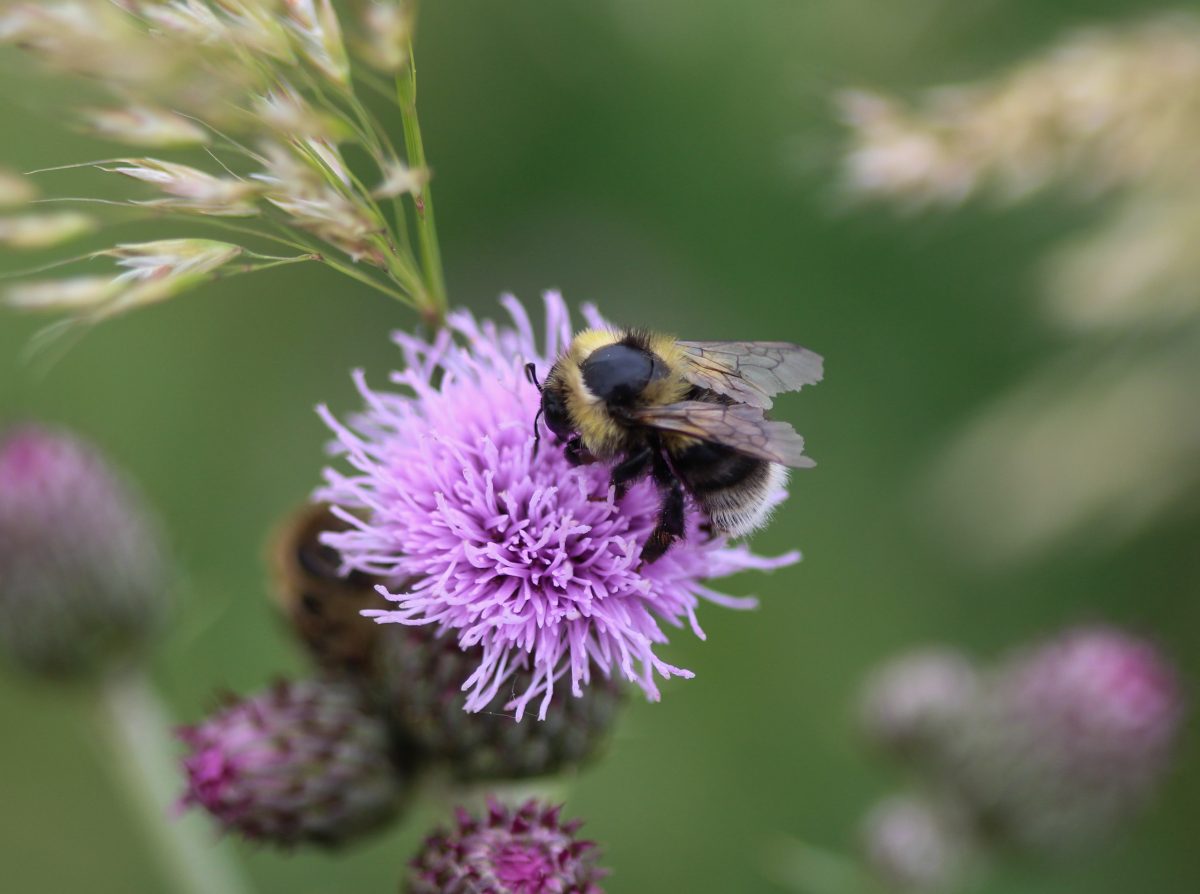 Shrill carder bee
Shrill carder bee
In Pembrokeshire the Bumblebee Conservation Trust, has worked with the Ministry of Defence, Pembrokeshire Coast National Park Authority and Natural Resources Wales on a project to enhance a wildflower habitat on the Castlemartin Range. The project is to support, and hopefully expand, the habitat for one of the few remaining populations of the shrill carder bee.
The shrill carder bee is one the UK’s rarest bumblebee species. Only six populations survive, one of which is found on the Ministry of Defence Range at Castlemartin. This grey-green bee with a single black stripe on its body is easily recognisable because of its rapid flight, producing a high-pitched buzz. The shrill carder bee thrives best on herb-rich grassland, such as that found on the military range. The range was taken over by the army before the World War II, and so has escaped modern intensive agriculture practices. It is estimated that a viable population of carder bees needs a habitat of 10 square kilometres.
The project at Castlemartin will enhance the existing habitat through the planting of native wildflower species, but also by working to link patches of habitat. The scheme will not only benefit bee species, but also the many creatures that live in the grassland of the Castlemartin Range.
Sea slugs
Ask many people what a nudibranch is and they would not have a clue. But around the waters of Pembrokeshire nudibranchs are a beautiful, if overlooked, part of the flora and fauna. Their success in Pembrokeshire reflects the quality of the seas off our coast.
A nudibranch is better known by the name sea slug or sea hare. There are 108 recorded species in the UK’s waters, and at more than 70 have been found off the coast of Pembrokeshire. Some are tiny, just a few millimetres long, while others can be several centimetres in length. All are beautifully camouflaged, resembling seaweed or sea anemones. Sea slugs are carnivorous, feeding on corals and sea anemones, while sea hares are herbivores, eating algae and seaweed.
The seas around the marine nature reserve of Skomer Island are monitored for their nudibranch populations. In 2010 there were 55 species were recorded around the island, including several nationally rare species, and others not previously recorded around Skomer. The recording work is carried out by volunteer divers.
You do not need to go to Skomer, or be an experienced diver to see these fascinating creatures. A survey of Martin’s Haven, the launch site for boats to Skomer, found 31 species in one weekend. Pembrokeshire’s rockpools can hide their sluggy secrets. Sea slugs have been found by school children hunting in rockpools at Manorbier and Freshwater East.
The success of these small creatures must be in part due to the quality of the seas around the Pembrokeshire coast. Though the seas are not part of the Pembrokeshire Coast National Park, the Park Authority works closely with different organisations to help protect our precious marine waters for all wildlife.
